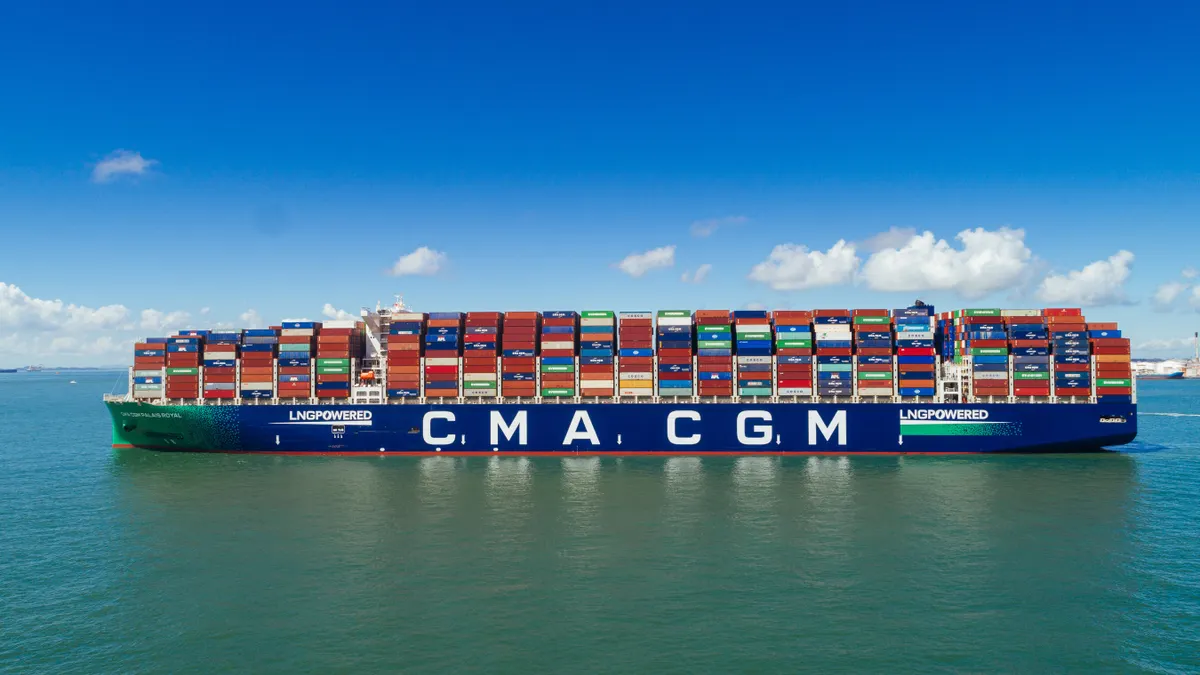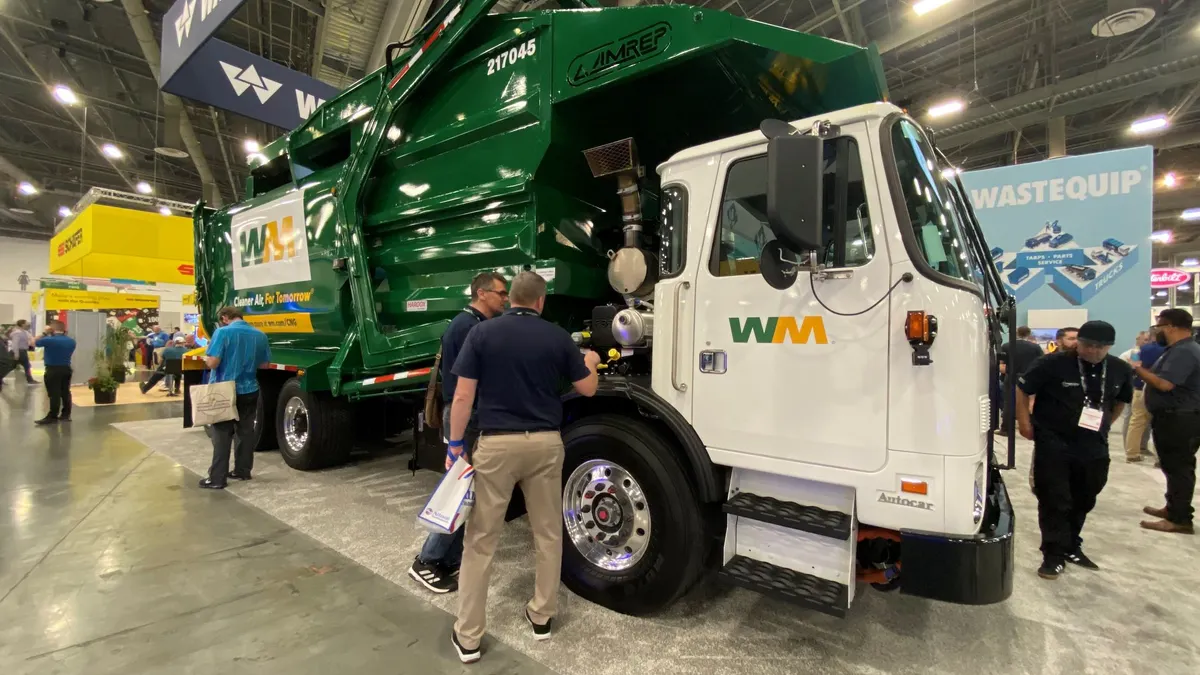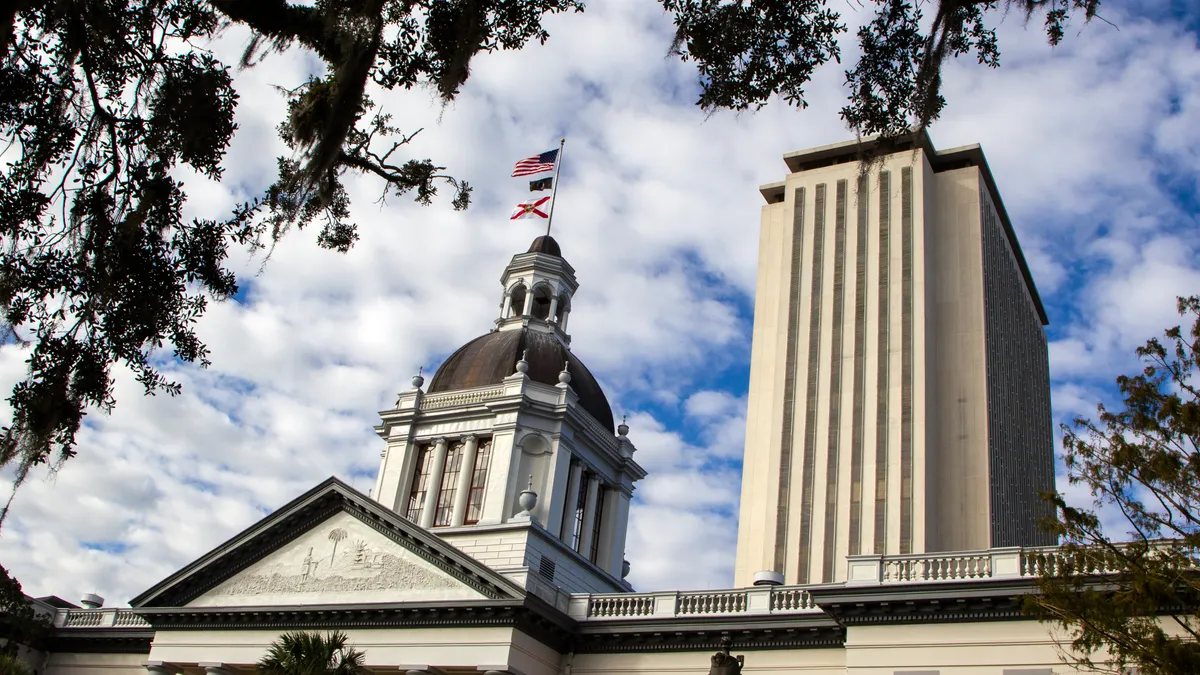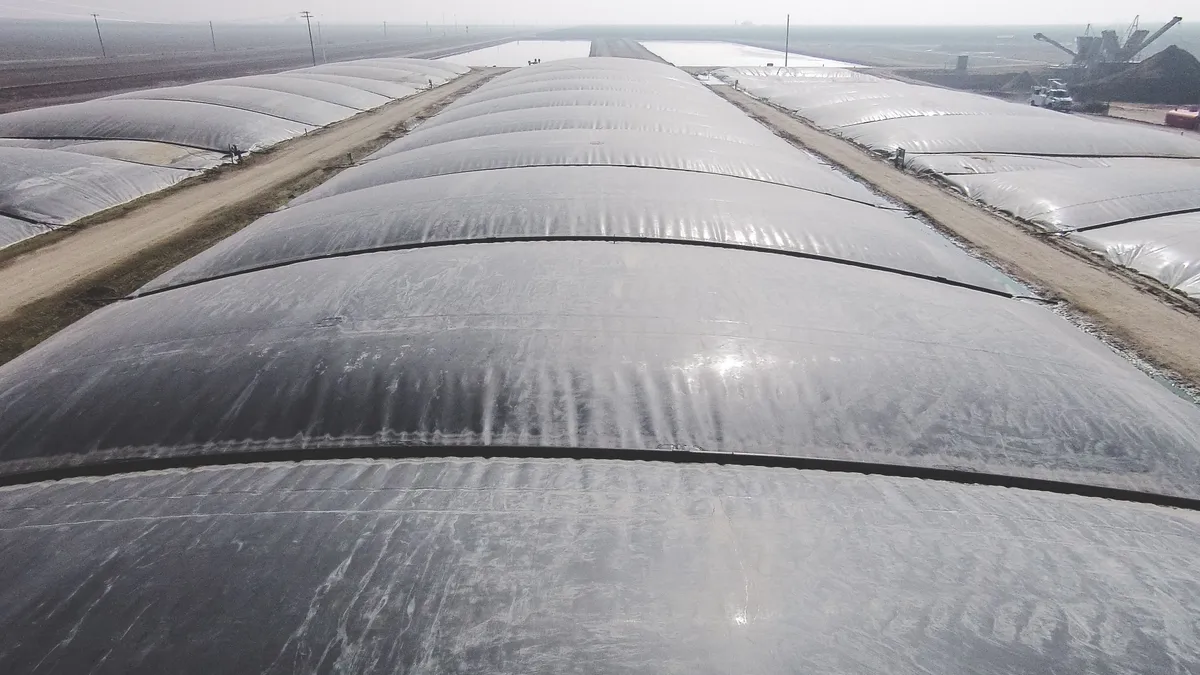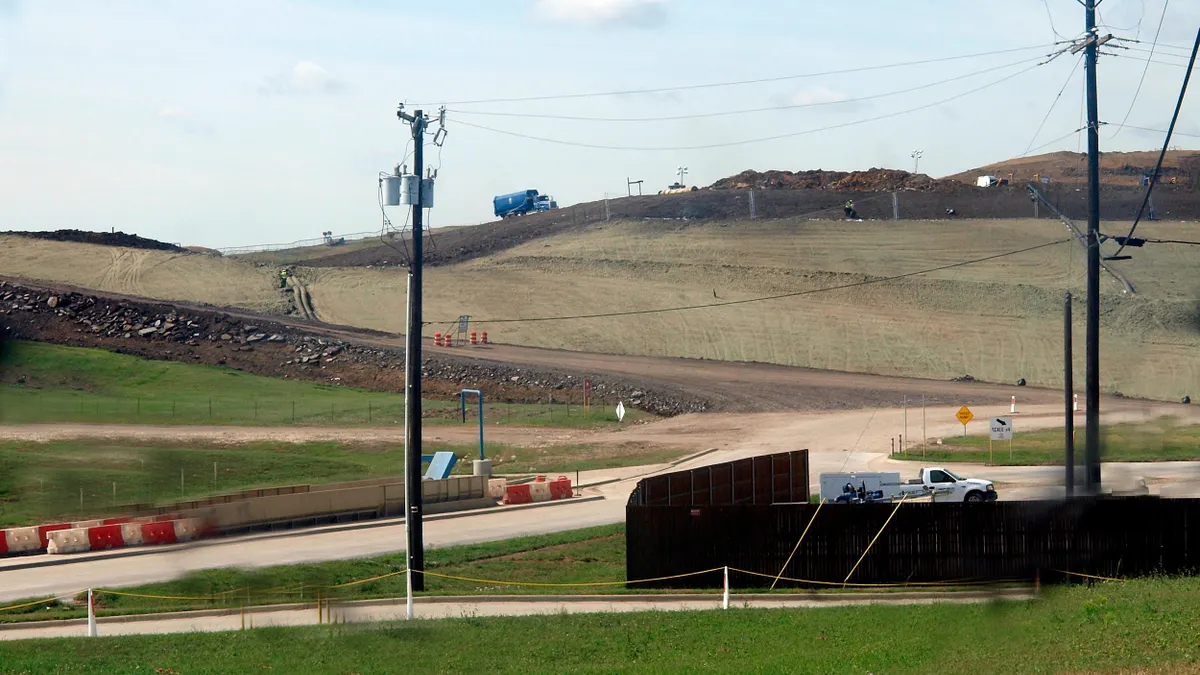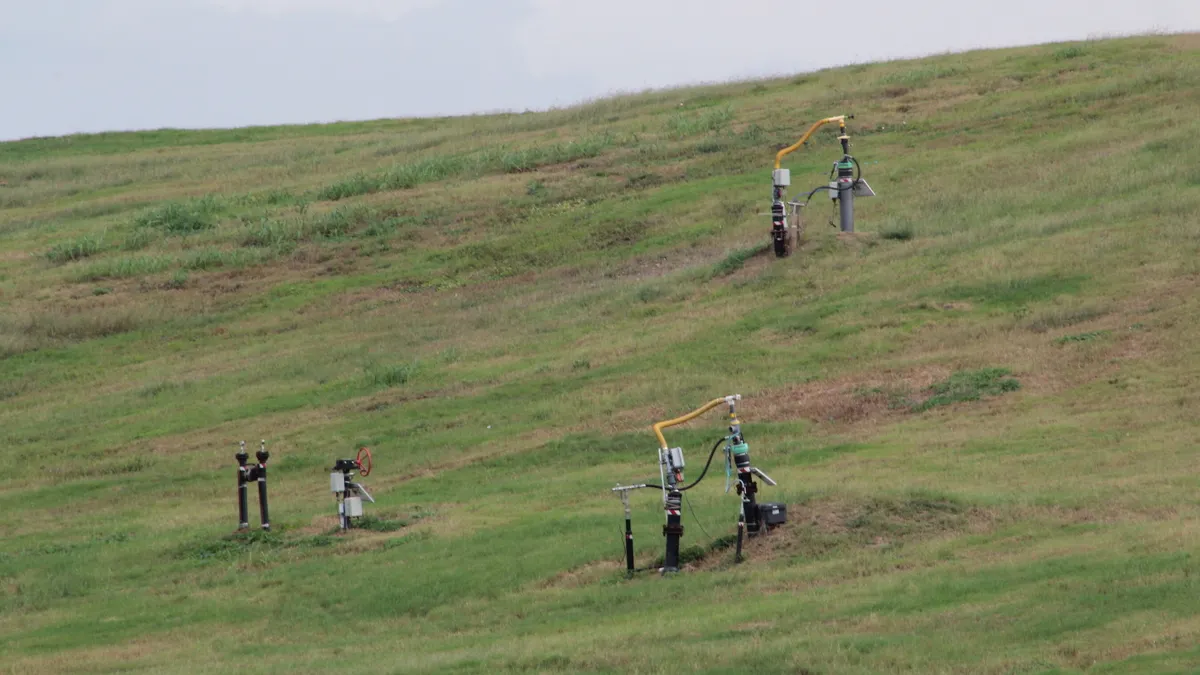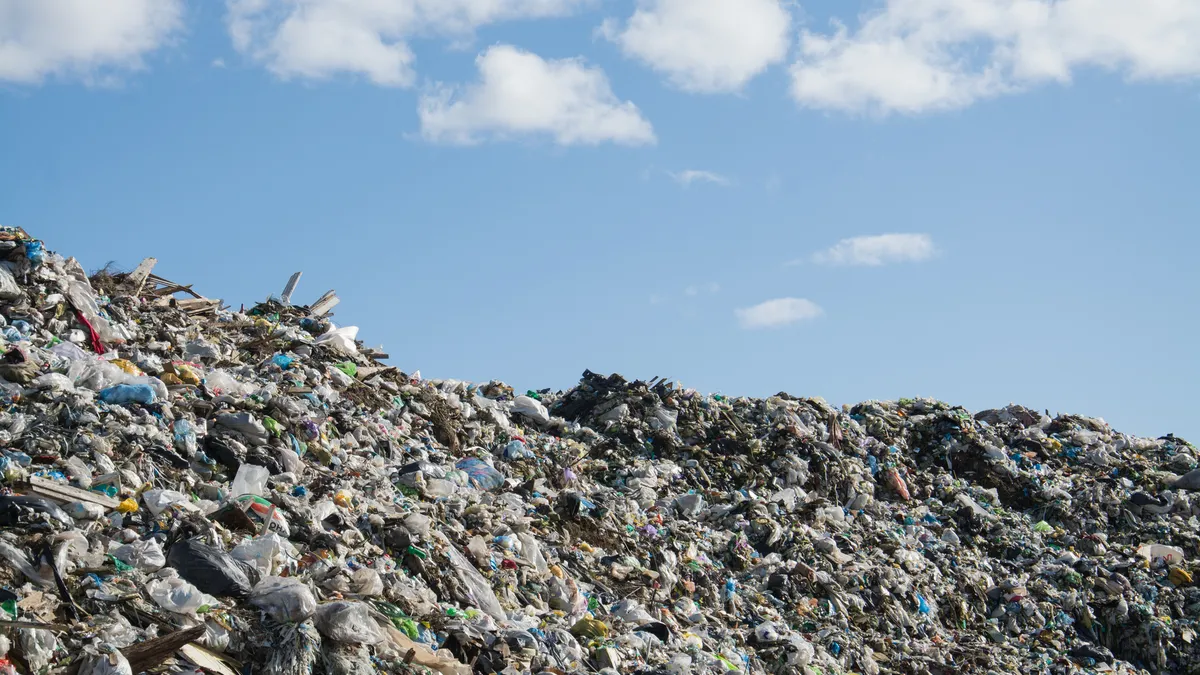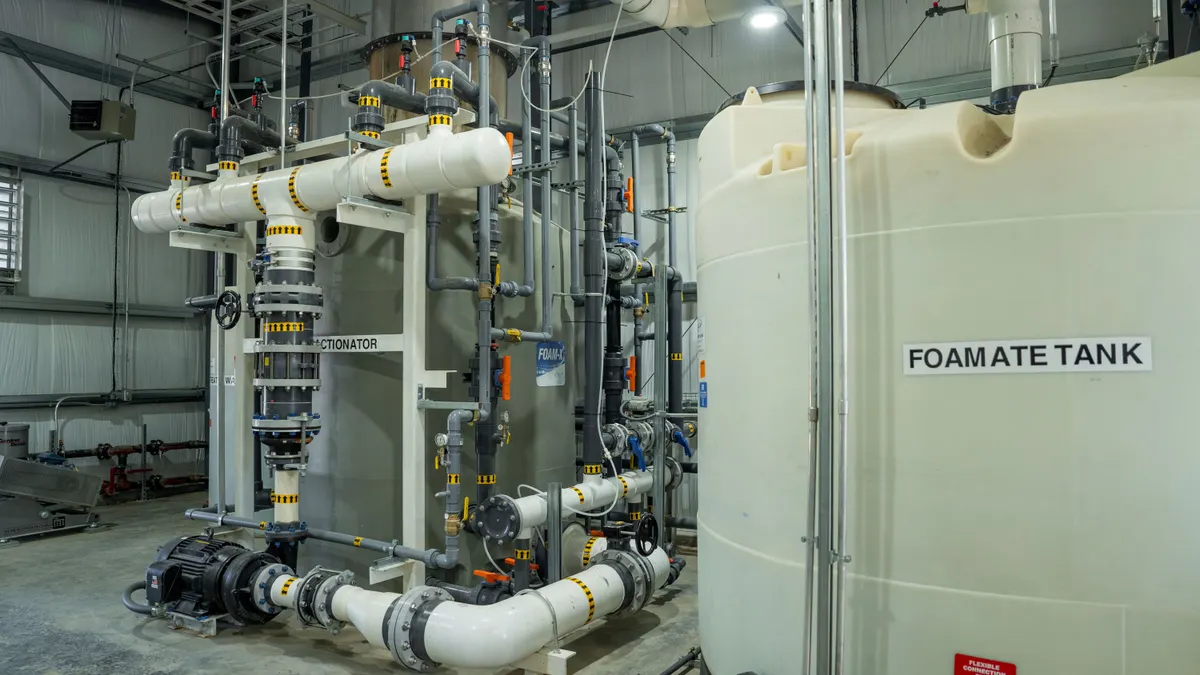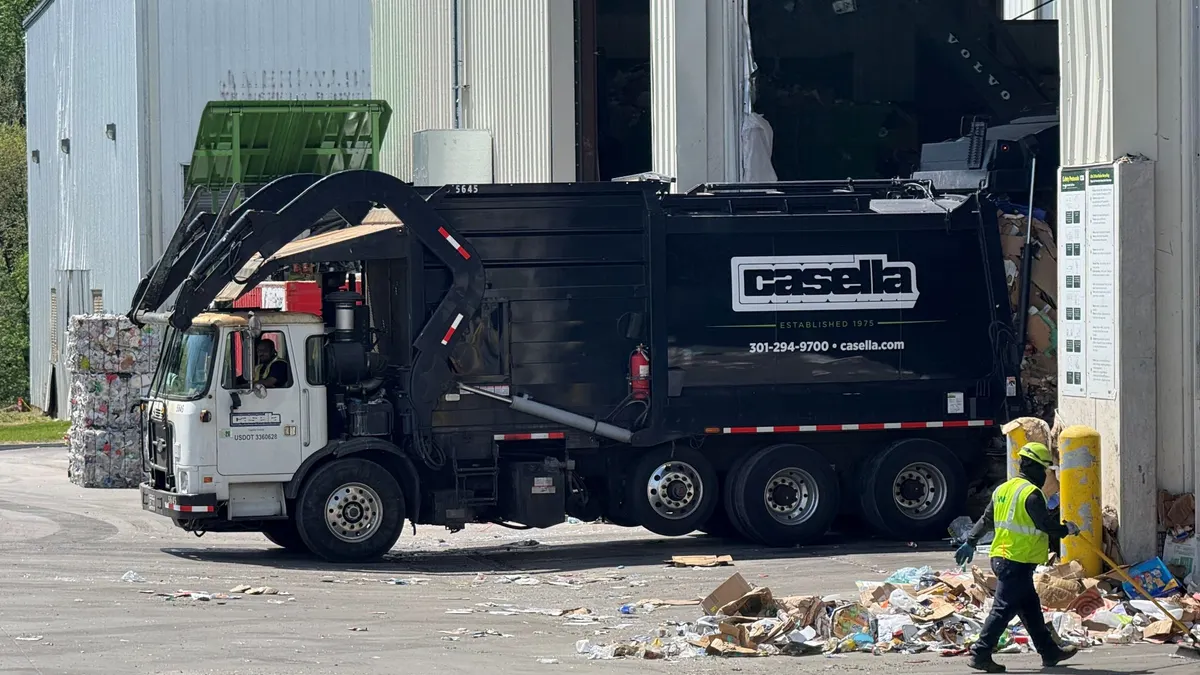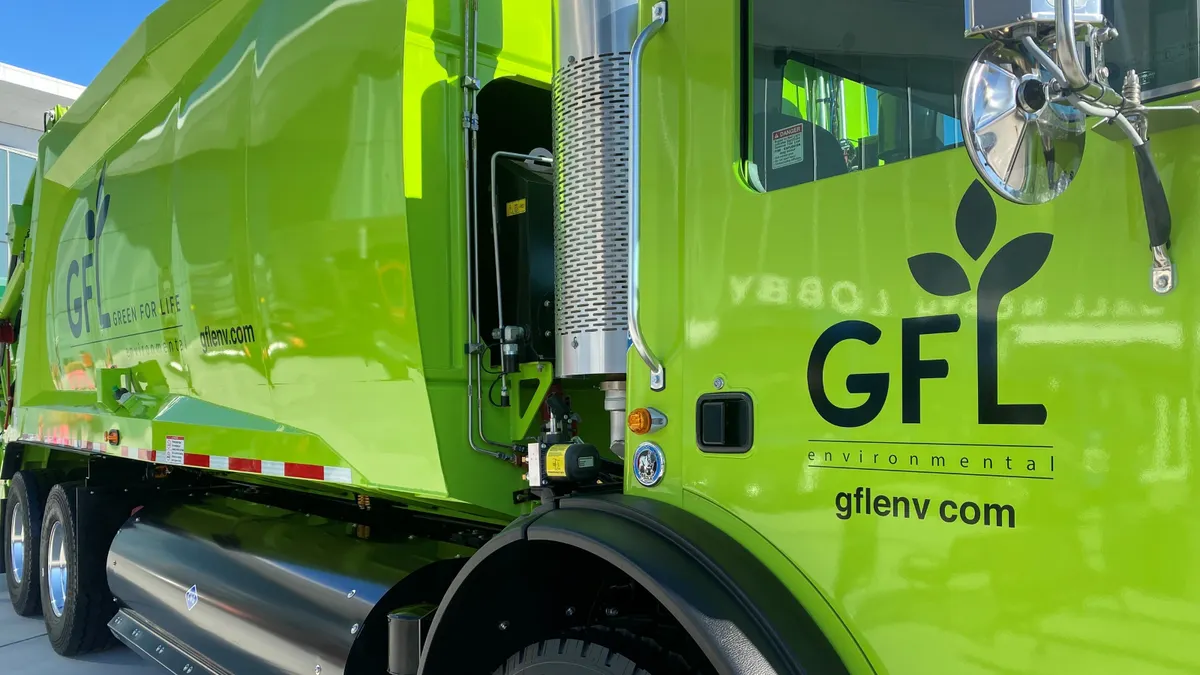This is the latest installment in Waste Dive’s Biogas Monthly series.
Landfill gas developers added more capacity in 2024 alone than they did from 2019 through 2022, the American Biogas Council reported in August. The year caps off rising investment in the space, as developers have poured more than $1 billion into the biogas space in each of the past two years.
That level of investment comes as industry proponents are increasingly looking to get landfill gas emissions under control. Energy Vision, a nonprofit that receives support from the RNG industry, found that gas capture technology could reduce landfill emissions by half for about $1.3 billion, per a report also issued in August.
The growth in gas capture capacity has correlated strongly with interest in renewable natural gas. Since 2020, the share of landfill gas output getting converted to RNG grew from 19% to 40%, per the ABC report.
As of August, there are 589 landfill biogas facilities in the U.S., per ABC. But there are hundreds more municipal solid waste landfills that could still capture and convert biogas to energy, according to the EPA.
That leaves the biogas industry with a runway for growth, particularly as new demand drivers emerge. This month, the industry saw two announcements related to shipping fuel months after the International Maritime Organization urged shippers to find ways to reduce the carbon intensity of their fuels.
The U.S. EPA is also in the midst of updating the Renewable Fuel Standard, a nationwide incentive program for alternative fuels. And Canada’s federal clean fuel program reported a major increase in RNG in its second year.
Below are a selection of updates from the biogas industry in August.
Utility agrees to offtake from planned Twin Cities facility
CenterPoint Energy signed an agreement with Dem-Con HZI Bioenergy to purchase RNG from the company's planned Shakopee, Minnesota, facility, MPR News reported.
The anaerobic digestion facility is set to take 75,000 tons of organic waste from residents in the Minneapolis-St. Paul area annually. Supplied and operated by Kanadevia Inova, the facility will also include a gasification component and produce biochar. That makes it the first facility of its kind in the country, according to a release.
The facility is set to be part of Dem-Con’s waste campus that already includes a landfill and MRF. It's part of the region's overall strategy to reduce waste, following a solid waste management plan update released in 2023.
The facility is set to open in 2027. CenterPoint, a utility based in Texas, has planned investments in 17 pilot projects and seven research and development projects as part of an innovation plan to identify sources of renewable energy.
Shipping giant invests in Vanguard Renewables for fuel access
France-based CMA CGM Group made a minority investment in Vanguard Renewables through its energy fund to secure RNG access.
Spurred by the International Maritime Organization's Net-zero Framework, CMA CGM is looking to incorporate liquefied natural gas derived from non-petroleum sources to reduce the carbon intensity of its shipping fuel.
The partners in the agreement did not disclose the financial stake. Guggenheim Securities served as Vanguard's financial advisor on the deal.
"We are thrilled to partner with CMA CGM, the third largest container shipping company in the world, in support of their decarbonization objectives," Michael O'Laughlin, CEO of Vanguard Renewables, said in a statement. "We see this pioneering collaboration as a key step in supporting the maritime sector as the global industry takes a bold step toward improving emissions."
Montauk Renewables launches methanol partnership
RNG developer Montauk Renewables launched a joint venture with Emvolon to produce methanol from landfill gas at WM’s Atascocita Landfill, the biogas companies announced. It follows a successful field demonstration project at the same site in Humble, Texas.
Methanol is an alcohol that is considered the building block for fuels and other products. It's commonly used in the maritime shipping industry, which has called for greener alternatives to natural gas or coal-derived methanol.
Montauk and Emvolon plan to produce the fuel component from previously flared waste gas at the Atascocita Humble Renewable Energy facility. At full volume, the project is expected to produce 6,000 metric tons of methanol annually.
The joint venture set a further goal to produce 50,000 metric tons of methanol by 2030 by partnering at multiple sites.
Southwest Gas to offtake RNG from Anaergia codigestion facility
Utility Southwest Gas and an Anaergia subsidiary reached a long-term offtake agreement for RNG produced at the Victor Valley Wastewater Reclamation Authority facility in California.
SoCal Biomethane, an Anaergia subsidiary, runs a co-digester at the site that processes wastewater sludge and food waste. Anaergia reached a 20-year agreement with VVRWA to process biogas from the authority's Victorville facility in 2013. In 2021, Anaergia began operations at the co-digesters, which can take in up to 65,000 gallons per day of external organic waste. The facility produces up to 320,000 mmBtus of RNG annually, per a company fact sheet.
The agreement with Southwest Gas will reduce utility emissions by up to 11,841 metric tons of carbon dioxide equivalent per year.
In addition to its California facilities, Anaergia continues to pursue opportunities abroad. After problems at the Rialto Bioenergy Facility in 2023 leading to the facility's spin-off and sale through bankruptcy auction last year, Anaergia has improved its financial performance.
In the second quarter, the RNG developer reported revenues were up 36.8% year over year, driven primarily by capital sales in the U.S. and Italy. The company still reported a net loss of $9.5 million, though that metric improved 29% year over year.



